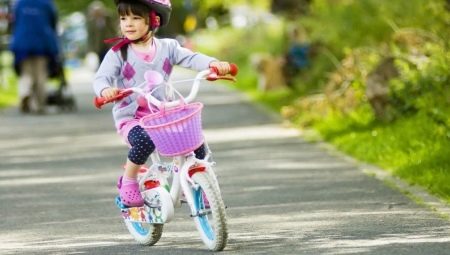Already at a relatively early age, children are not satisfied with walking and running. For full physical development and to emphasize their status among peers, they need a bicycle. But there are a number of subtleties that parents must definitely consider, otherwise the purchase will cause additional problems.
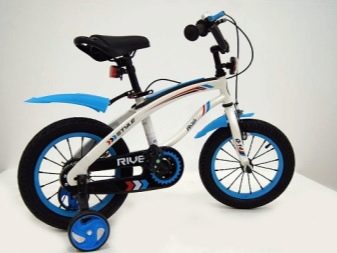

Features
It is generally accepted that a children's bicycle differs from an adult solely in the dimensions of the device as a whole and the dimensions of the individual parts. However, in reality, this naive superficial view is not justified. There are many other subtleties that amateurs are usually unaware of.
Products for children under 5 years old are different simplified design. In the vast majority of children's models, tubeless tires are used. But if these nuances may still differ, then here equipping with an ordinary chain gear, which obviously does not allow switching speeds, is an obligatory feature. Of course, a bike for a child is invariably painted in brighter colors than an adult model. Moreover, there are practically no unisex models.
And this is very good, because it also allows you to show the bright personality of the baby.
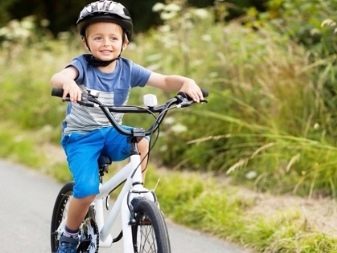
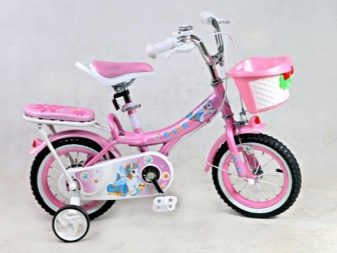
Additional features of children's cycling are:
- use of baskets and other accessories;
- chain drive cover with a protective cover;
- a sleeve of foam on the steering bar;
- making a bicycle without small structural and fastening parts that could be harmful.


Varieties
Speaking of children's bicycles from 3 years old, it must be borne in mind that this very definition - “from 3 years old” - is quite extensible.It includes younger preschoolers, for whom any bump is already a serious obstacle, and adolescents aged 12-14 years who love to travel several kilometers on not very good roads. Therefore, it is obvious that choosing a universal type of bike is not so simple. And the first guideline when choosing is the size of the wheel (its outer diameter).
There is such a gradation:
- from 3 to 5 years - 14 or 16 inches;
- from 5 to 9 years old - 18 or 20 inches;
- from 9 to 12 years old - 24 inches;
- from 14 years old - 26 inches.


But it is necessary to take into account, of course, the growth of a particular child. So, 14- and 16-inch wheels are suitable only for those who are not higher than 1.15 m. And for children aged 9-12 years who have grown 1.55 m, it is advisable to buy a teenage bike with a wheel of 26 inches or more. Attempts to consider only calendar age are meaningless. However, this is not all.
Design differences may even apply to models for different sexes. Of course, in a number of publications this specificity is delicately omitted. But still it is and deserves close attention. Differences may concern:
- steering wheel width;
- tire widths;
- frame heights;
- seat height.
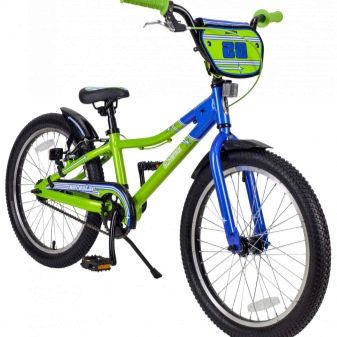
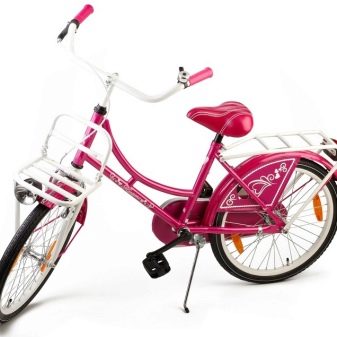
But all this applies more to the initial teenage models. Purely for children, for primary schoolchildren and for preschoolers, bikes really differ only in appearance and brightness of color. The already said is enough to understand - the expression “ordinary children's bicycle” alone does not say much ... unless they speak about a misunderstanding by the speakers.
Everyone knows, for example, that for children under 5-6 years old they usually use tricycles, and later they gradually switch to two-wheeled models. But this is due not only to the emergence of better balancing skills and the fact that “it is embarrassing to ride three wheels.” The third wheel is also an important safety feature.
Curiously, there are transformable models in which the third wheel can be easily removed at the request of the owners.
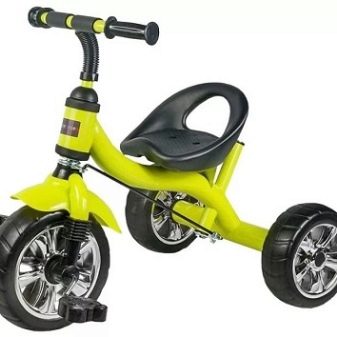
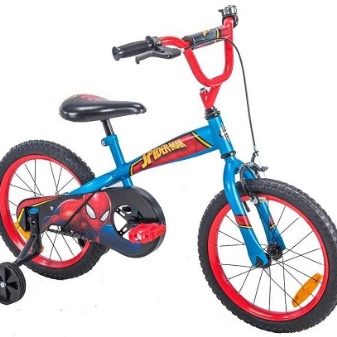
A simple three-wheeled bike will have to be changed to a two-wheeled one - it is almost impossible to change its design on its own or even in a workshop. But as children grow, not only the size of the bike increases, but also its weight. Movement becomes more difficult and more and more problems are caused, for example, by climbing the stairs in a house without an elevator or manually dragging it through obstacles. It turns out the use of light aluminum alloys and other lightweight (compared to steel) materials.
But the increase in the size of the bike, even compensated by lightweight materials, also makes it difficult to store it, as well as transportation in a car, bus, train and so on. Therefore, for schoolchildren, especially adolescents, relevant folding type of bikes. It is divided into conditional subspecies depending on how much the size is reduced after folding.
To school, to the store and just for a walk, starting from a certain age, it’s more comfortable to ride on a bicycle with a basket. It is easy to fold various things there, freeing up your hands and unloading backpacks, bags.


But back to the characteristics of children's bicycles for different ages. It may seem that the difference between them applies only to the size of the wheels. It's not like that at all. Designs designed for 3-5 years of age are equipped with a brake located in front or behind. Versions designed for children aged 5–9 years are usually equipped with a multi-speed transmission.
They also often have two brakes: the rear is driven by the feet and the front by the hands (V-brake execution prevails). To make the trip more comfortable, use shock-absorbing forks of a special sample. As for versions for children from 9 to 12 years old, they differ little from adults (with the exception of frame dimensions). Of course, only for the smallest children use bikes with a parental handle.
Another special category is runbikes (they are also runbikes): they never have pedals.

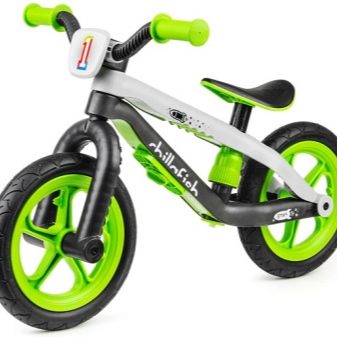
Materials and Design
Children's bicycles also differ in structural materials. Almost all mass-produced models are equipped with steel or aluminum frames. On thematic forums, hundreds of pages of comments and dozens of fierce discussions are devoted to the question of which material is better. To understand this, you must carefully analyze the features of all options.
For over 100 years, almost since the creation of bicycles, it has been actively used stainless steel. More recently, some experts believed that its share would decrease significantly, and most of the new designs would be made of aluminum and other materials. But these expectations did not materialize. The good old alloy of iron with carbon is very durable, and alternative solutions can hardly be compared with it in this indicator. It's obvious that for “off-road conquerors” and tourists traveling to an unpopulated area, the reliability criterion will come first.
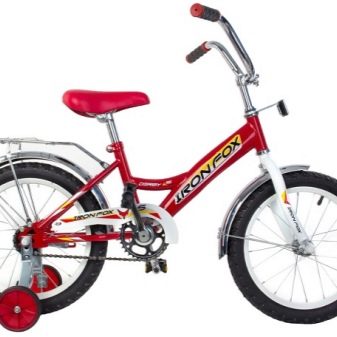
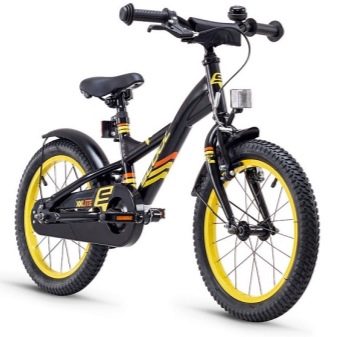
Keep in mind that bicycles use three types of steel alloys. The simplest metal is the most accessible and very inexpensive. It is from him that the bikes sold in the markets and in hypermarkets with a universal set of products are made. The low cost of structures results in a high risk of corrosion. Concerning carbon steel then it is also called highly drawn, and in English descriptions - High Ten. The price of this metal is slightly higher, but it is more flexible and allows you to compensate for vibration.
Chromium and Molybdenum Steel has a structure with particularly fine grain. Therefore, its strength is very great. The likelihood of corrosion is lower than the two previous options, however, it persists. Concerning aluminum, it should be borne in mind that in a chemically pure form this material cannot be used because of too much softness. Therefore, in practice, bicycle frames are made of aluminum alloys with other non-ferrous metals.
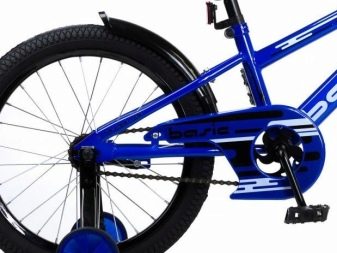
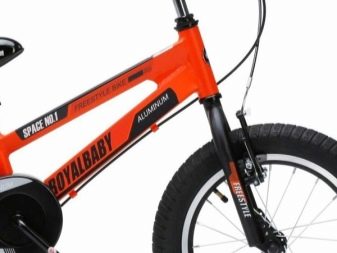
They are lighter than those made of steel. Therefore, acceleration is simpler, and it will be less difficult to overcome a steep climb. However, the advantage of aluminum is somewhat overshadowed by its low (compared to steel) inertia. Vibration damping is also worse. An important disadvantage is that the aluminum frame will break down immediately, without “warning” cracks, because the risk of injury is high enough.
It is worth remembering that the best aluminum alloys - those that have been heat treated. Alloys 7005 and 7075 are superior in reliability to 6061, but are easier to weld. But if you want to achieve absolutely extraordinary results when riding, then you can choose bicycles with titanium frame. There is, however, one more problem - the choice of such bikes, even with the availability of funds, is rather scarce.
But the titanium bike will last over 15 years and will perfectly dampen vibrations on the road.
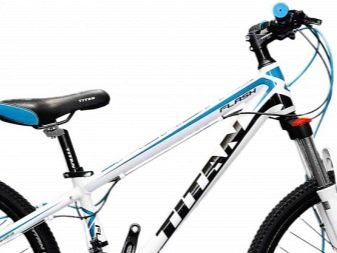

Fans of modern technology often choose a polymer material - carbon. It is formed by interweaving carbon filaments surrounded by a matrix based on polymer resins. As a result, excellent strength is guaranteed with longitudinal mechanical stress. To compensate for the low resistance to side impacts, the threads are layered in different directions. It is worth noting that carbon found application not only in the creation of bicycle transport frames, but also in production:
- steering wheels;
- pins under the seats;
- wheels
- steering outriggers;
- forks.
Despite all the efforts of the developers, carbon parts can be destroyed by intense point impact. In addition, even in successful circumstances, they will last a maximum of several years. And the handling of carbon bikes should be as careful as possible.
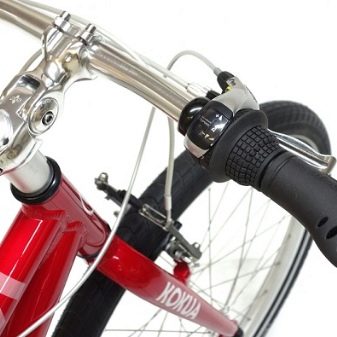
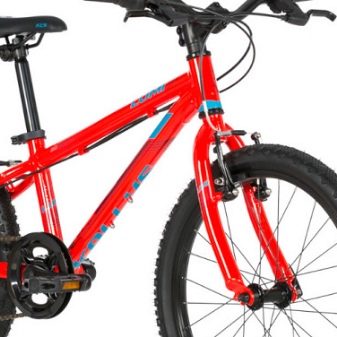
If you need the lightest frames, you should give preference to products made of magnesium. True, they are very expensive and are found only occasionally. But there are no special complaints from users on them. Excellent damping of vibrations and excellent quality of movement are noted.Magnesium-based bikes look very attractive. But we must understand that this material copes with point impacts even worse than carbon, and also very poorly tolerates large loads.
Nevertheless, magnesium has taken a worthy place in bicycle construction - it is used for the manufacture of shock absorbers forks.

Another lightweight material is scandium. It is very durable, heavier than magnesium, but lighter than titanium. It is only necessary to understand that the slightest deviations from the normal technology of its processing turn into problems.
In rare cases, apply:
- beryllium-based alloys;
- wood;
- bamboo (all the more fashionable in recent years).
There are many options for the original design of children's bikes. You can often see:
- braiding wheels with multi-colored wire;
- bright headlights and mudguards;
- original reflectors;
- high handlebars (suitable only for children who are confident in owning a bicycle).
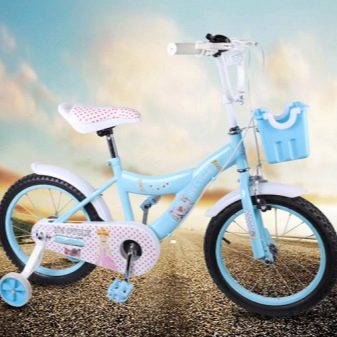
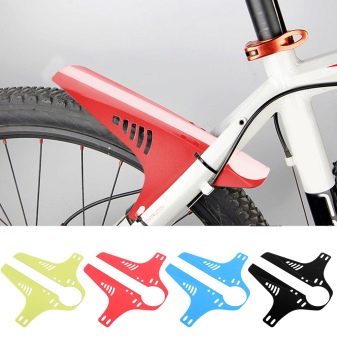
Rating of the best models
The top quality children's bicycles fall German brand models Kreiss. For example, a three-wheeled modification with seat belts and a limiting bumper. This bike has:
- parental control knobs;
- small luggage baskets;
- wheels with a diameter of 0.23 m in front and 0.19 m in back;
- permissible load of 30 kg.
It is worth noting that despite the actual development in Germany, the production itself is located in China. The weight of the Kreiss tricycle is 9.15 kg. In the process of its manufacture, not only metal is used, but also plastic, and even textiles.
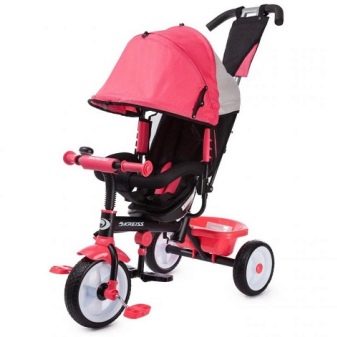
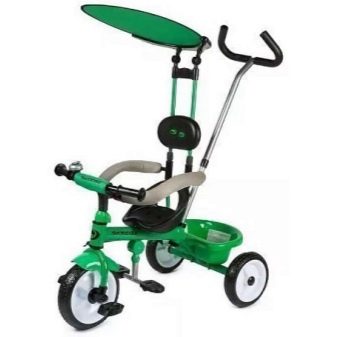
As an alternative, consider the model Globber Go Bike.
Its main characteristics are as follows:
- destination - for girls (pink), for boys (blue);
- hardtail format frame;
- no brakes;
- 8 inch wheels
- aluminum steering wheel with height adjustment of 0.43-0.48 m;
- single ride speed;
- solid steel frame;
- compacted grips;
- industrial grade bearings;
- hardened plastic rims;
- total weight 2.58 kg;
- ethyl vinyl acetate tires.
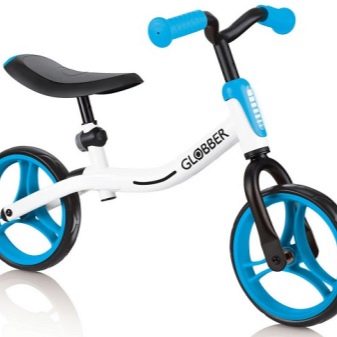
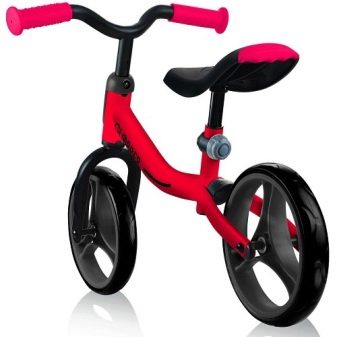
Another good option is Novatrack prime with a single size of 1-1.17 m. This bike is painted white. It is equipped with foot brakes and sixteen-inch wheels. The hardtail format frame is made of aluminum, and the front brake meets the requirements of the V-Brake standard. By default, the model is designed to use hard shock absorbing forks.
The optimal model for many may become Forward funky with wheels with a diameter of 14 inches. This bike is designed with a height of 0.95-1.14 m. By default, it is equipped with foot brakes and a steel frame in hardtail format. Only one driving speed is provided. The threaded steering column is equipped with a steering angle limiter. FWD steering wheel made of steel.
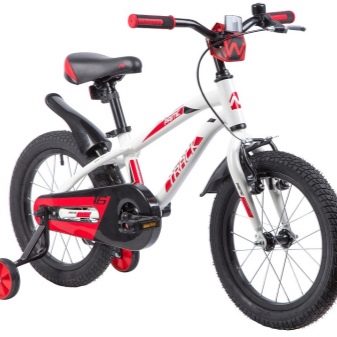
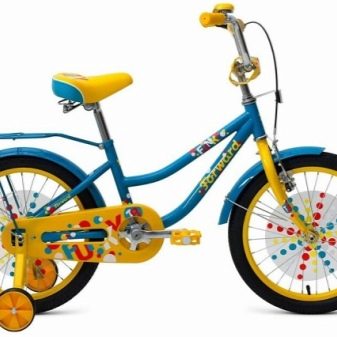
Model chain KMC C410 It works very reliably and stably. The same applies to bushings, and Forward tires of 2.125 inches wide, and to the steel pin located under the seat. The steel rigid fork also does not cause complaints.
But for use by teenagers, a bicycle is better Silverback Stride Speed. This is a road model with 28 inch wheels. Rim brakes will stop the bike at any of 16 speeds. The aluminum alloy frame is light enough. The function of folding the frame is not provided. Shifters, connecting rods, switches, cassette, bushings are manufactured at Shimano plants.
There are no brake rotors. Square's steel carriage works relatively well; the same applies to the PYC 8003. The wheels are equipped with dual steel rims. A steering extension of 0.08-0.11 m in length is provided. The pedals are not used in the construction, but there is an aluminum steering wheel with butting.

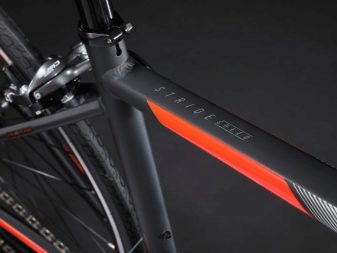
How to choose?
But simply limiting oneself to the proposals of leading companies is not enough. When choosing a vehicle for babies from the age of three, you need to focus on the level of security. For young children it is better to choose particularly stable four-wheel models. Even if equilibrium is temporarily lost, a fall from them is almost impossible.
When choosing a bicycle for a child, they pay attention to his height. This indicator is successively divided by 2.5 and 2.54 (this is how the optimal frame size is calculated). It’s better to go shopping with the children themselves. Let them sit on the bike and talk about their impressions. If there is more than 0.2 m from the belt to the frame, then if necessary the traveling child will not be able to jump to the side.
Normally, the legs reach the pedals and there is no need to bend, bend to reach the steering wheel.
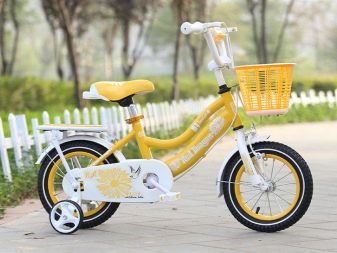
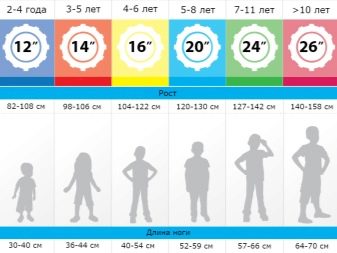
Both the first and subsequent bikes It is advisable to purchase at specialized outlets. There is no certainty that high-quality goods are sold in markets and small shops, and even in ordinary supermarkets. As for the difference between the bikes for the boy and the girl, in the age group of 3-5 years it is expressed exclusively in the design of structures. And of course, the products of well-known world brands deserve approval much more than fakes released by unknown people.
The rotation of the steering wheel on its axis is unacceptable. Special limiters help prevent it. Be sure to make sure that there are lights and reflectors.
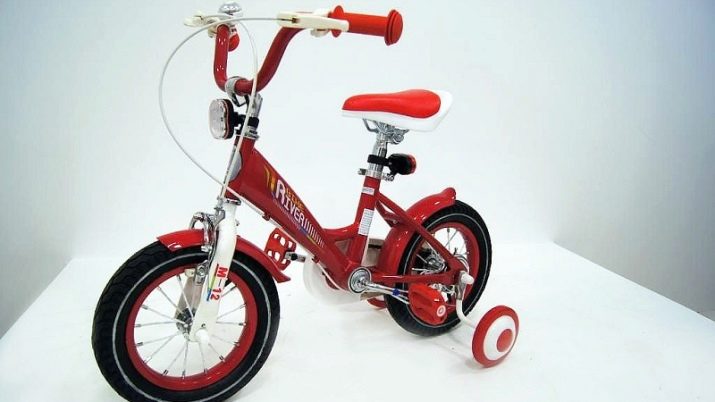
As with adult models, when buying bikes for children of any age, they evaluate:
- quality and ease of torsion of wheels;
- serviceability of brakes;
- steering responsiveness;
- quality of fasteners;
- sound signals.
The seat should be made of soft material and have an ergonomic configuration. Protective pads on chains, steering columns are very useful. Thanks to them, the risk of injury is reduced and clothes are not contaminated. At the age of 6 to 10 years it is necessary to focus on interest when driving. The horn, rear-view mirrors, various accessories and interactive toys are already important here.
These elements also guarantee the intellectual development of the child.

On how to choose a children's bike from 3 years old, see the next video.
